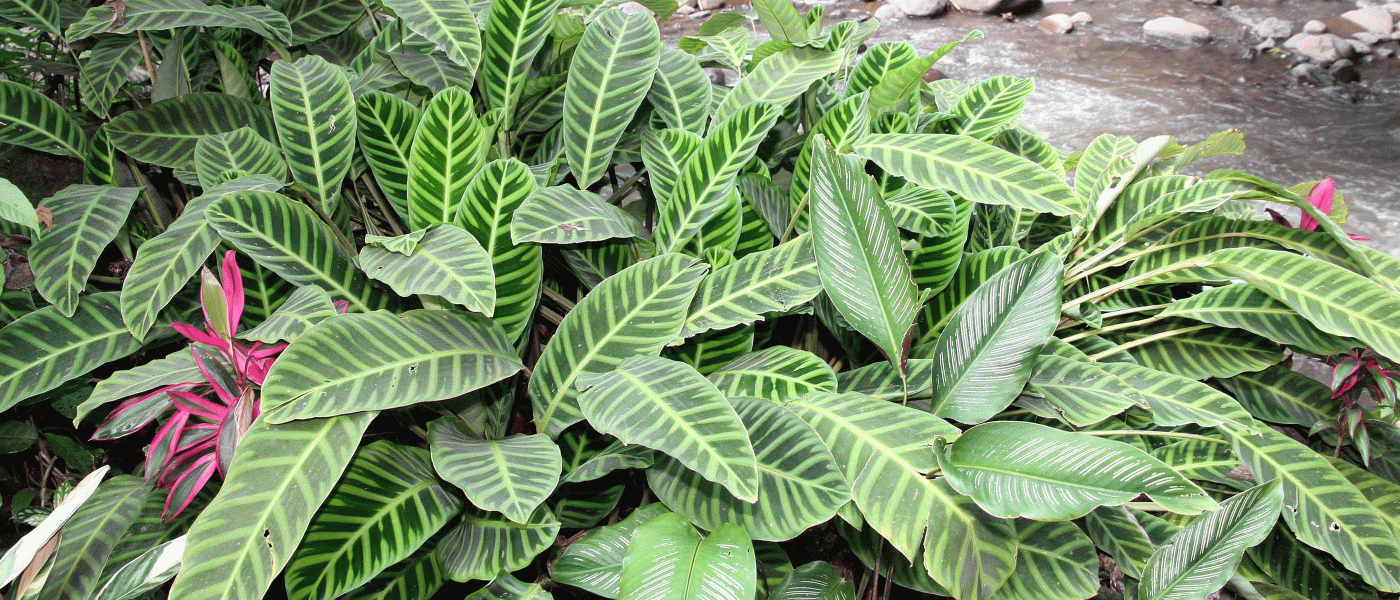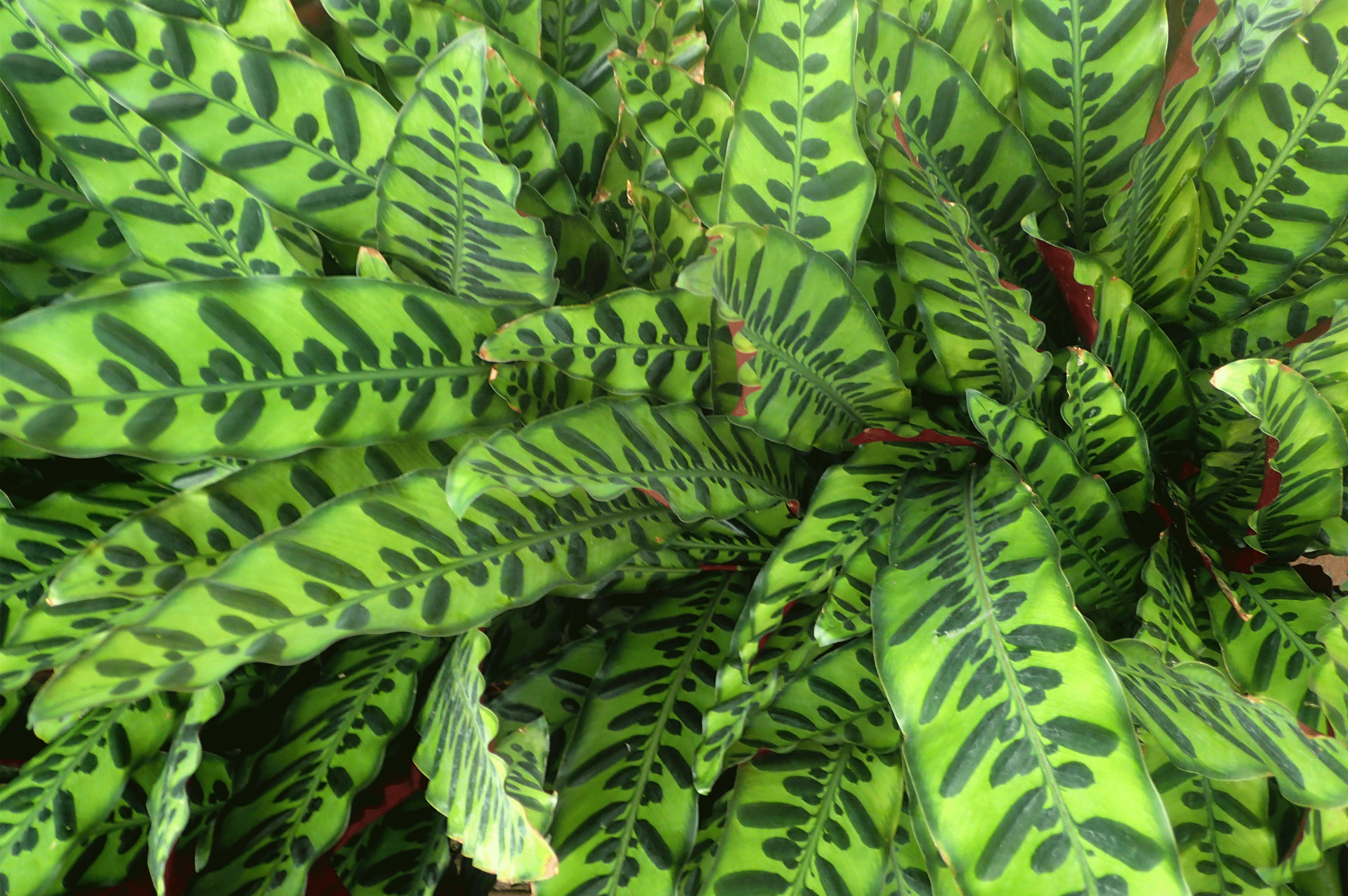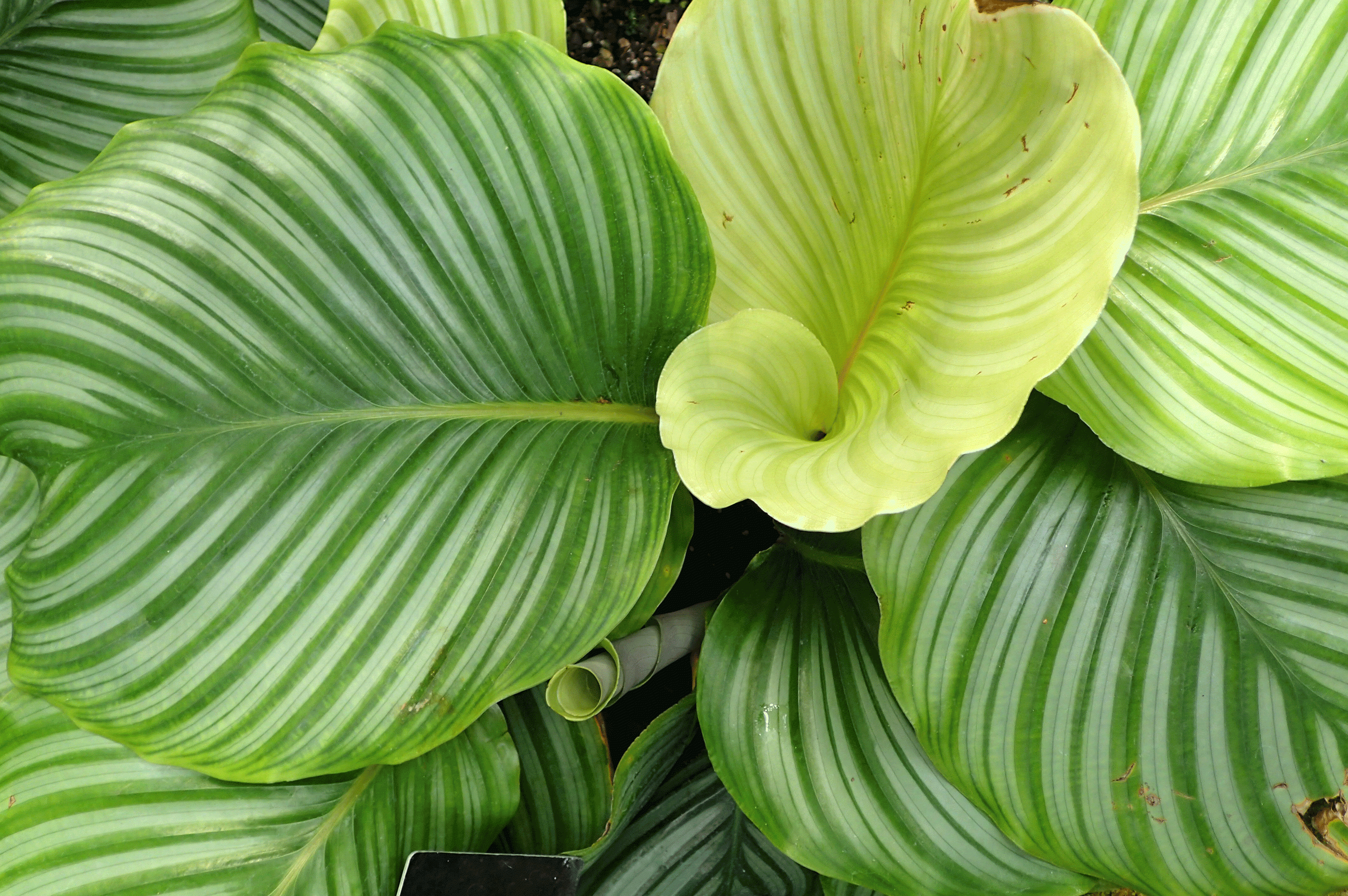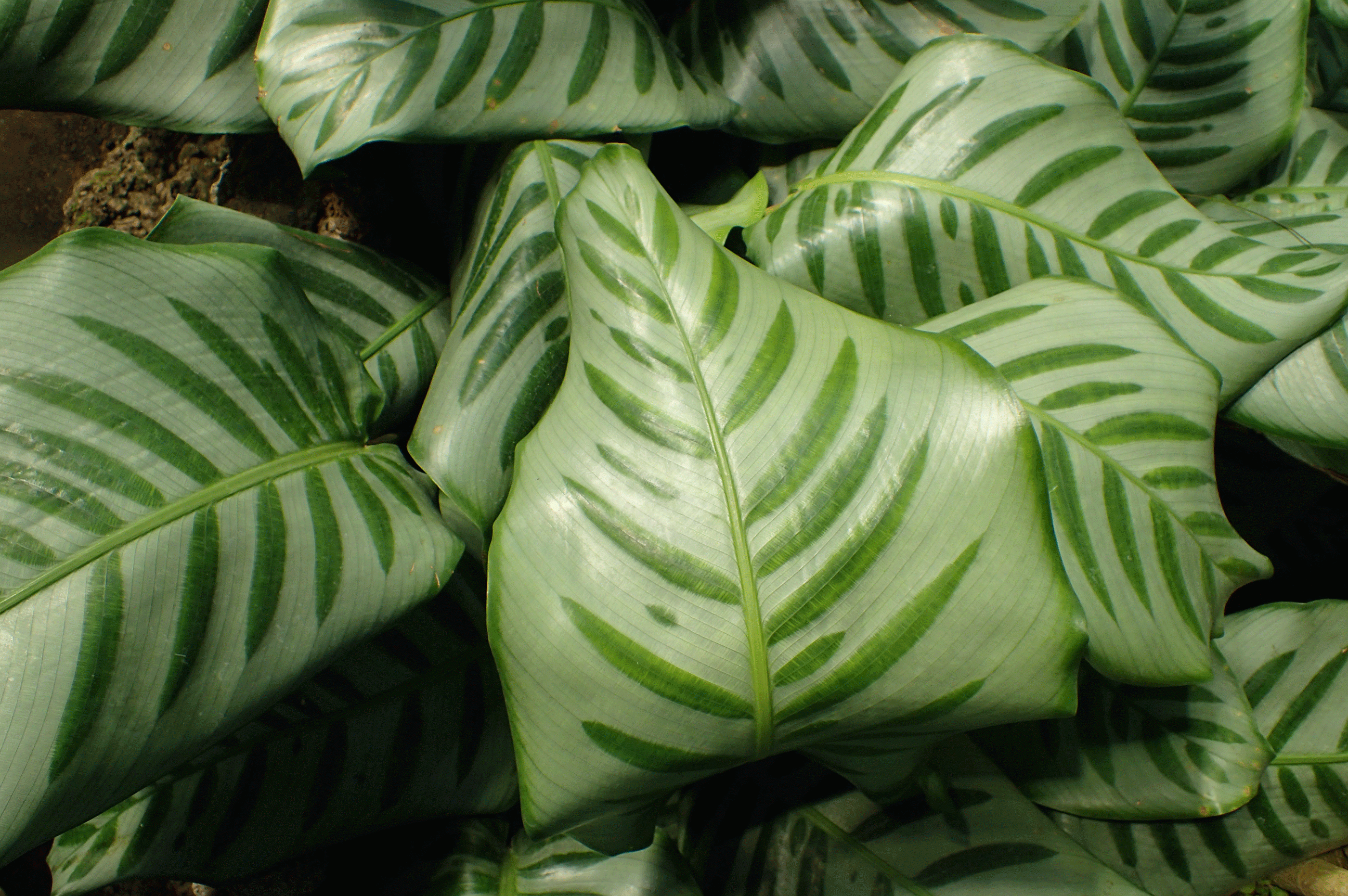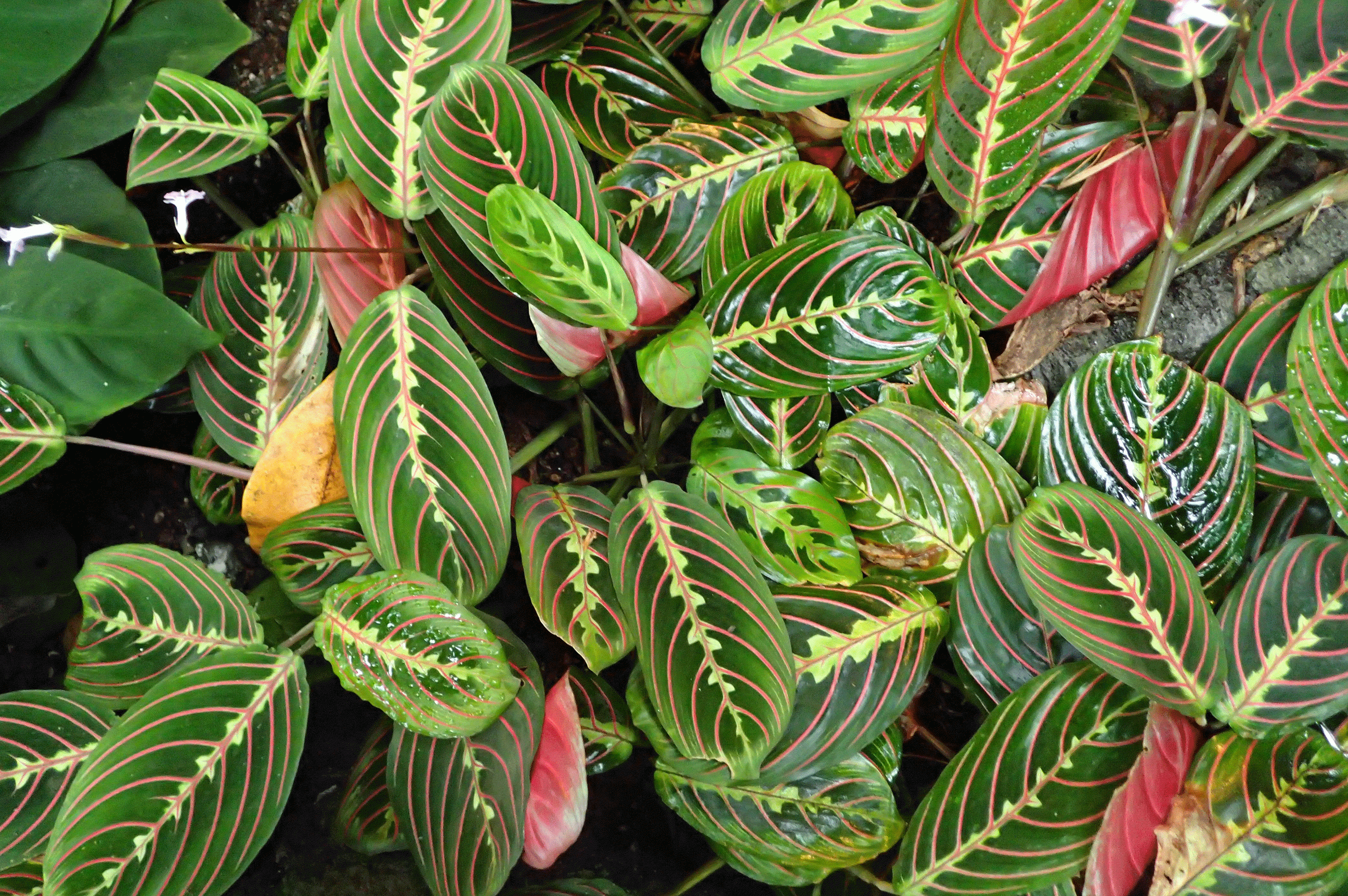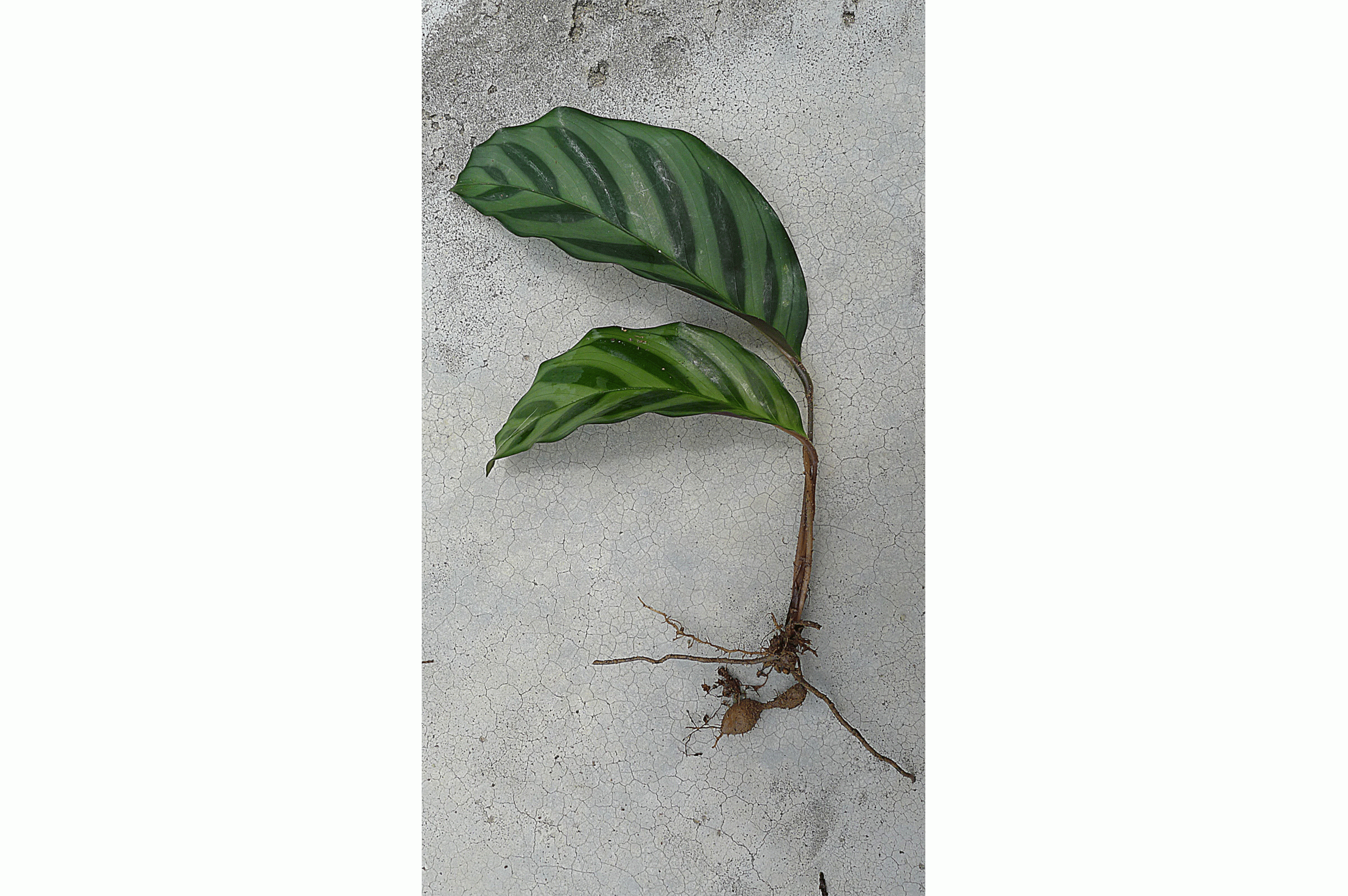The Wonderful World of Calatheas
Calatheas are a wonderful addition to any houseplant collection. They offer striking leaves, handle a variety of lighting conditions, and are nontoxic to pets and easy to care for. Once you understand their origins and needs, it’s a breeze to add loads of calatheas to your home and office to be the envy of any visitors.
What Is a Calathea?
Calatheas are widely available as houseplants and come from the Calathea genus, part of of the Marantaceae, or arrowroot family. Within the genus are about 60 species and many cultivars. (Some plants formerly known as calathea are now classified in the Goeppertia genus and may still be labeled calathea.) They are tropical, but far from the tallest tropical plant. They live under a tropical canopy and have adapted to thrive there in a variety of ways.
All calathea have leaves that move! This characteristic, called nyctinasty, allows the plant to move to a circadian rhythm by changing the water pressure at the joint where the leaf meets the stalk (pulvinus)—it pushes its leaves upward at night to efficiently gather the dew, and spreads its leaves during the day to follow the sun.
What’s So Great About Calatheas?
- They have beautiful patterns.
- They bloom on occasion.
- They’re safe for pets (and children).
- They can live for decades.
- They handle a range of lighting conditions.
- They are forgiving and will bounce back quickly.
- They move, and are the subject of interesting time-lapse videos.
- The leaves can be used in food and floral decor.
The degree of movement will vary between calathea varieties, as with other plants in the family. The entire Marantaceae family is known for nyctinasty, with those in the Maranta genus being the most athletic (they are commonly known as prayer plants for this characteristic). While their leaves are all quite colorful, you can differentiate maranta from calathea by maranta’s common pattern and oval leaves. Calatheas are second to marantas in speed, but they are still pretty similar. Their care requirements are the same (although a few will say that calatheas are more finicky), but calatheas have significantly more variety between leaf shapes and colors.
How Do I Make a Calathea Thrive?
Calatheas love humidity! Say it with me: Calatheas love humidity! You can create humidity in two ways—use a humidifier, or group several plants together in the most humid place you can find (that provides indirect light, or has a plant light). I’ll bet you a rattlesnake plant (Calathea lancifolia) that anyone who complains that these plants are hard to care for doesn’t have a humidifier in the room. It’s worth mentioning that each situation varies, but if you see crispy edges on your plant, you’ll know it needs more humidity.
Humidity, continued. A less effective but still serviceable trick is to put the plant on a tray filled with water and pebbles—the pebbles keep the plant out of the water and the evaporation creates humidity around the plant. Doing this, however, makes your plant more vulnerable to fungus gnats, mold, and fungus infections. Check and clean the tray weekly. Don’t bother misting—it is ineffective. Just. Get. A. Humidifier. Your plants and your sinuses will thank you.
Calatheas thrive in indirect light. The light ratio for these beauties is flexible, but there are definite guidelines that originate from its natural habitat underneath the tropical forest canopy. Full sun will burn the leaves, and too little light will stunt plant growth. They can grow in the shade, but won’t do well in darkness. I tend to find that the broader-leaved varieties do well with less light, since the leaves are designed to catch as much light as possible. If given the option, initially place the plant few feet from an east- or west-facing window and monitor it from there.
Calatheas do not like to dry between waterings. If you’re going to be an inconsistent waterer, then you’ll see more crispy leaves than you’d like. The soil is best mixed with some peat moss to retain more moisture; water when the top inch or two is dry. Good drainage is key because the roots don’t like to sit in water. The soil should stay moist, not wet, as improper drainage can cause root rot or fungus gnats. Check it every few days until you have a good idea of its watering cycle.
Calatheas like the occasional gentle fertilizing. I prefer adding earthworm castings to the top inch of soil, but a slow-release houseplant fertilizer works fine too. Fertilizing can make your calathea grow twice as big, and keep it twice as healthy. Pasta water or water you boiled your potatoes in is a simple remedy that allows the plant to absorb more nutrients from the soil.
Calatheas do not like hard water. NYC has some of the best water in the world, so if you live here, tap water is generally fine for these lovelies (just let it sit out for an hour or two so the chlorine dissipates). However, if you know your water contains minerals or just want to play it safe, use filtered or rain water.
Let’s Talk Soil.
Calatheas will do well in a soil that mimics their moisture needs—50 percent potting mix, 20 percent peat moss, 20 percent perlite, 10 percent coir. Whether you’re a novice or expert calathea owner, just get as close as you can to this formula and your verdant beauty will stay happy.
Compacted soil (from infrequent/unreliable watering) is the number-one reason for crispy leaves. Adding coir to the mix helps prevent this, but you’ll still need to keep up with the watering.
Making Babies
Calatheas propagate through division of root cuttings. The best time to propagate is in the spring because plants already anticipate new growth. Water your plant two days before you plan on propagating to ensure the plant is ready for the procedure. Take your calathea out of the pot and look for natural divisions in the root system—this is where you will separate the baby from the parent plant. Gently work the soil so the roots separate easily. Losing a few root offshoots is expected but generally, the plant should separate fairly easily. Trim any unhealthy-looking roots and plant both mother and baby in separate pots with a mixture of old and new soil—this helps prevent plant shock. Water them both and monitor them until you see new growth. That’s how you know your plant is happy in its new environment.
Pests, and How to Treat Them
Don’t roll out the red carpet for aphids, mealy bugs, or fungus gnats. Keep standing water away from your plants and always create an interim area for any plant you bring in until you know it’s free of these common greenhouse pests. The interim area should be at least 6 feet from other plants. Any nursery or garden center can receive an infected shipment so we social distance our plants to ensure they don’t pass these pests to our other plants.
If you should wind up with them it’s easy to treat with insecticidal soap or neem oil, as both are safe for the house. Wash off what you can first. Then, be sure to follow directions and spray under the leaves as well as the rest of the plant. After treatment, keep separate for at least a month to be sure there’s no reinfestation.
Know Thyself
So, do you have what it takes to cultivate calatheas?
Do you have a spot with medium to bright indirect light? Some do fine in lower light. Are you willing to set up a humidifier or group a few of them together? Are you able to check them twice a week for water until you have a watering schedule? Are you willing to fertilize every few months (for best results)?
That’s really all there is to it. Just a little bit of care goes a long way, and these showy plants will live for many years. The joy they bring is worth the effort.


